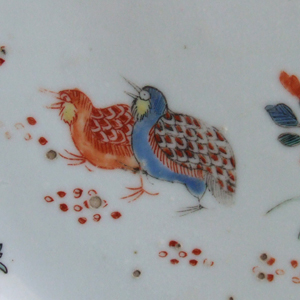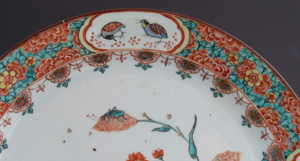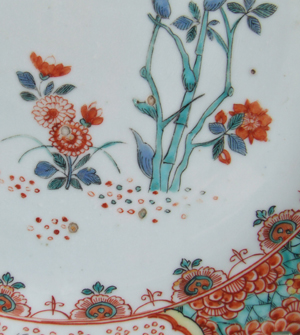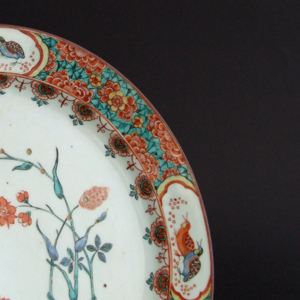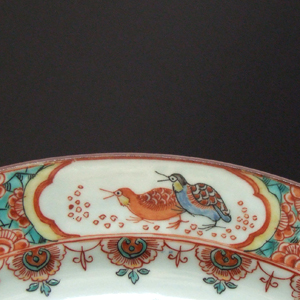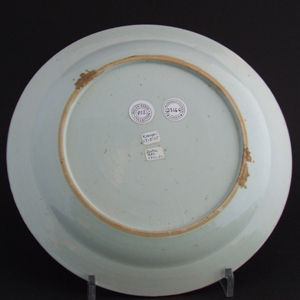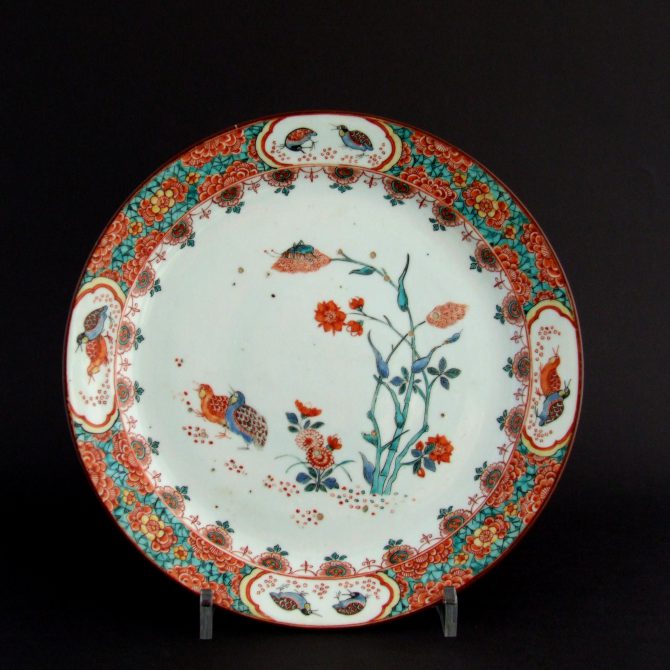
KANGXI or YONGZHENG c.1710 – 1730 Dutch Decorated Chinese Export Porcelain
An Early 18th Century Chinese Export Porcelain Plate, Late Kangxi or Yongzheng c.1710-1730 Decorated in Holland in the Kakiemon Style c.1720-1730 with the Two Quail Pattern. Showing Two Quail Among Millet.
Although there is a clear link between Kakiemon designs and this plate the enamel colours are closer to Kangxi Famille Verte.
SOLD
- Condition
- Very good, a very small glaze chip to the back of the rim.
- Size
- N/A
- Provenance
- Sotheby`s Amsterdam, Lot 44. November 28th 2000. The Helen Espir Collection of European Decorated Chinese Export Porcelain : "a member of the Oriental Ceramic Society and collector, with her husband. Having made a typical collection of Song and provincial Ming blue and white, they decided to concentrate on what used to be called `clobbered` porcelain. She is the author of the standard work on the subject, European Decoration on Oriental Porcelain,2005, the first to examine the work of European decorators on Chinese porcelain throughout the eighteenth and nineteenth centuries, focusing on enamellers in Holland, Germany and England. She has learned Chinese." From Provenance ; Collectors, Dealers & Scholars : Chinese Ceramics in Britain & America (Roy Davids, Dominic Jellinek, Privately Printed, 2011. ISBN 978-0-9570148-0-0).
- Stock number
- 23666
- References
- For a Dutch Delft dish with a very similar version of the Two Quail pattern see : The Two Quail Pattern, 300 Years of Design on Porcelain, A History of Pattern and a Catalogue of Porcelain Factories from the West and East (Dr Chris Girton, Louvic Publications, 2004. ISBN 0-9547195-0-6) page 33, figure 23. Helen Espir`s notes mention a Dutch Delft plate from the Franks Collection in the British Museum with this design but lacking the rim border, reference AF3179. Exhibited and Published : An exhibition at the British Museum organised by the Oriental Ceramics Society `East Meets West : Oriental Porcelain Decorated in Europe` in 2000. Published in `Transactions of the Oriental Ceramic Society` Volume 65. 2000-2001. Item 3, page 110. Published : European Decoration on Oriental Porcelain 1700 - 1830 (Helen Espir, Jorge Welsh Books, 2005) page 78, plate 9 (right).
Information
Kakiemon Porcelain :
Kakiemon decoration is usually of high quality, often delicate and with well-balanced asymmetric designs. The designs were normally quite sparse emphasizing the fine white porcelain body known in Japan as Nigoshide (milky white). The opaque white milky Nigoshide body was used on the finest pieces, it appears that it was reserved for fine quality enamelled decoration. Kakiemon porcelain was decorated with a great variety of imaginative designs which include elements such as the `banded hedge`, `flying squirrel`, and the `Quail and Millet` design. The `Three Friends of Winter` were also a very popular group of designs, other subject taken from nature include flowers (especially the chrysanthemum, the national flower of Japan) as well as birds and rock-work. Figural subjects such as the `Hob in the Well` were also popular. This design illustrates a Chinese folk tale where a sage saves his friend who has fallen into a large fish-bowl by throwing stones at it, braking open the pot. Banded-Hedges were a formal device within Japanese traditional gardens, they were often incorporated in designs, includes `The Three Friends of Winter` (Pine, Bamboo and Prunus). These three plants signify perseverance, as neither the pine nor the bamboo shed their leaves in winter and the plumb (Prunus) flowers at the very end of the winter, heralding the arrival of spring.
